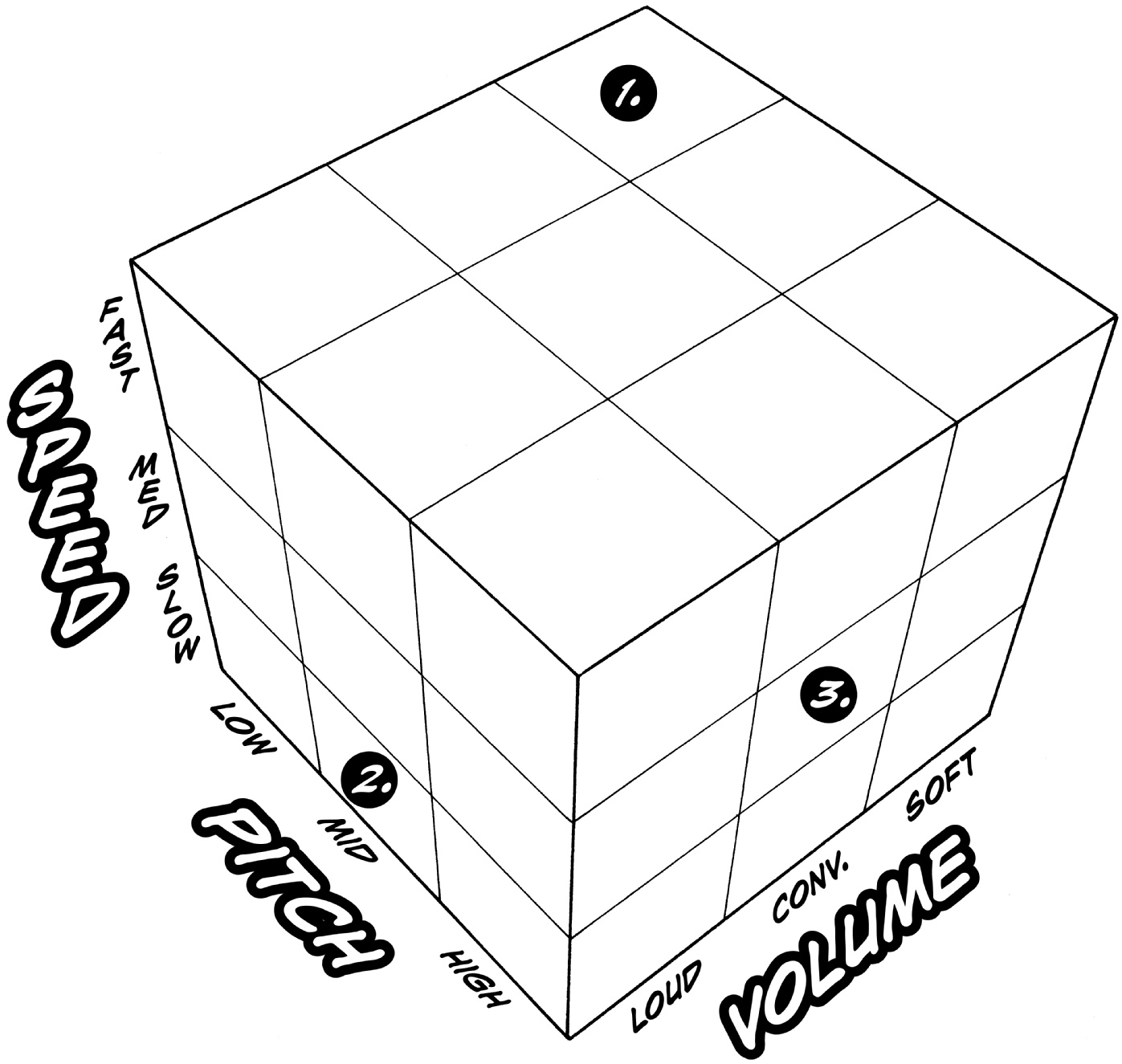Voice Over: Playing with Speed, Pitch and Volume
There are so many different elements that contribute to how a person sounds, and if you can become aware of them, you can use them to your advantage to help you create some really fun, funky, and fancy voices for your repertoire. Start with the speed which is simply how quickly you’re speaking: slow, medium, or fast. People often joke about Southerners (from the U.S.) speaking in a slow, meandering drawl, while folks from the northeast (U.S. again) are more fast-paced, quick, and to the point. Play around with your speed to find fun patterns, not only of the words, but of the phrases and sentences.
Then move to the pitch. Generally a voice can be pitched high, mid-range, or low. Some examples of a high-pitched voice might be the aforementioned Spongebob Squarepants, or the actress Ellen Greene, or yourself after sucking on a helium balloon. A low-pitched voice calls to mind James Earl Jones, Tom Waits, Ron Perlman, or Lurch from The Addams Family. The rest of us fall somewhere in the middle.
One person’s mid-range pitch may be your low or high depending on how you’re built, and depending on what sex you are: men naturally tend to have a lower register, while women’s voices are usually higher. Play around with your pitch a little and see what happens. It can lead to touching moments, funny moments, and downright scary moments sometimes.
The final basic element is volume: loud, conversational, and soft. Perhaps a male character speaks in a loud booming voice and is always being asked to quiet down (maybe he worked for years in an anvil factory). Or a female character’s voice is shy and whispery, and no one can understand her (too many years as a librarian, perhaps). See how entire characters can develop out of how loud or soft you choose to speak?
 Now look at these three elements: speed, pitch, and volume, and break each of them down into its low, medium, and high grades. The result is nine different qualities to mix and match in three dimensions. Imagine a giant 3-D tic-tac-toe board with each quality represented by its own dimension. It’s kind of like a simplified vocal Rubik’s Cube of choices, with speed represented by height, pitch represented by width, and volume represented by depth (see diagram below). Now pick one of the intersections of these elements (a small cube within the cube) and see what combo you get. Here are quality groupings you’d end up with if you selected each of the numbered cubes in the illustration:
Now look at these three elements: speed, pitch, and volume, and break each of them down into its low, medium, and high grades. The result is nine different qualities to mix and match in three dimensions. Imagine a giant 3-D tic-tac-toe board with each quality represented by its own dimension. It’s kind of like a simplified vocal Rubik’s Cube of choices, with speed represented by height, pitch represented by width, and volume represented by depth (see diagram below). Now pick one of the intersections of these elements (a small cube within the cube) and see what combo you get. Here are quality groupings you’d end up with if you selected each of the numbered cubes in the illustration:
Cube 1: a fast, low-pitched, soft voice
Cube 2: a slow, mid-range, loud voice
Cube 3: a medium-speed, high-pitched, conversational voice
You can come up with a variety of other combinations simply by mixing these three different qualities. This doesn’t even take into account other flair you can add, such as attitude, accent, or age. The possibilities are (nearly) endless!
